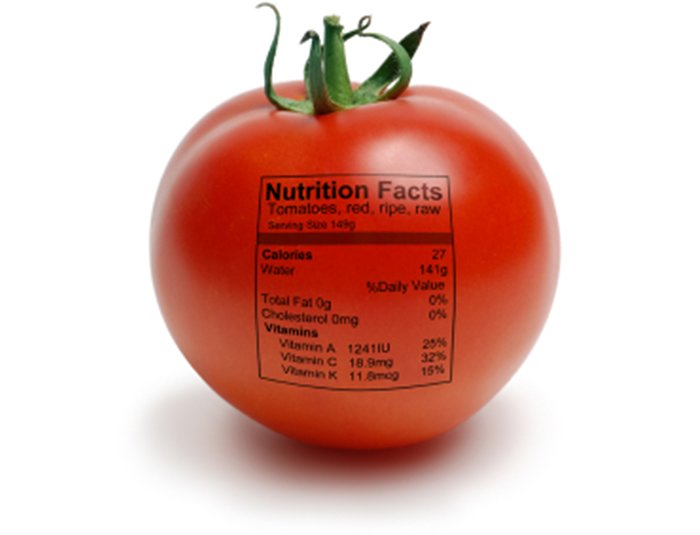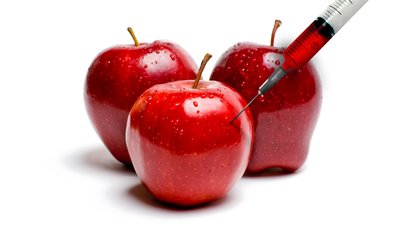Even though they've been in the news and in grocery store shelves in the U.S. for years, genetically modified organisms (GMOs) are still a controversial topic. GMOs have their admirers and their detractors. To some, GMOs provide food to millions of hungry people. To others, they pose a catastrophic threat to our bodies and environment. To make it even more confusing, you can go online and find an endless number of articles and scientific papers that support either side.
So, let's start with the basics.
What Are Gmos and Why Do Some People Like Them?
The idea of creating new kinds of plants is not a recent phenomenon. Humans have been breeding plants to create new plants with more desirable traits for more than 14,000 years. New varieties were usually created the old-fashioned way: by planting seeds harvested from plants with those desirable traits, artificially mating or cross-pollinating different plants, or grafting one type of plant onto another.[1] Plants were, and still are, altered using mutation breeding, in which crop seeds are exposed to radiation or strong chemicals. The process creates lots of random genetic mutations, which the breeders will go through to find plant varieties with the desired traits. Although this may seem like a very odd way to go about breeding, many edible and ornamental plants have been created this way since the 1930s.

Jump ahead to the modern era, and plants are now bred using recombinant DNA technology, the process behind GMOs. This process, which takes place at the molecular level, enables plant breeders to introduce specific genes (from varieties or species of plants—and even from animals) into a plant literally one gene at a time.[2] GMO technology enables breeders to change the characteristics of plants in a specific, powerful, controllable, and faster way.
For those in favor of GMOs, this means breeders can create plants that need less water, grow in salty soils, and aren't harmed by insects, insecticides, or herbicides. [3] GMO technology can benefit consumers, too, such as the development of tomatoes and apples with delayed ripening.[4]
These GMO crops can be picked, packed and shipped, and arrive days later on store shelves without becoming overripe. GMO crops can also be engineered to produce bigger yields and increased nutritional value. "Golden rice" is a GMO crop that produces beta-carotene, which could potentially help prevent vitamin-A deficiency among people in developing countries.[5]
What's Not to Like About GMOs?
The GMO debate is complicated. People disagree on the definition of a GMO, if and how GMOs should be labeled, and whether GMO technology is too risky to allow. The U.S. has monitored the development and distribution of GMO crops, although many people argue that it is not doing enough. For those organic-food fans out there, it's worth noting that the USDA prohibits organic farmers from introducing genes from a different species into their crops.[6]
A lot of the opposition to GMOs comes from the idea that GMO plants are "unnatural," with uncertain effects on humans and the environment. Even though GMOs have been part of our food supply for the last 20 years or so, their long-term effects are largely unknown. Opponents of GMOs claim that these new plants are more likely to be more toxic than conventionally bred ones. They say GMOs are more likely to cause allergic reactions and other health problems and threaten biodiversity. But the biggest fear is that the widespread us of GMOs could cause unpredictable, devastating effects.[7]

Some GMOs, for instance, are designed to resist the herbicides farmers spray on their crops to control weeds. But when farmers constantly spray with the same herbicide, it leads to the creation of "superweeds" that can no longer be killed by that herbicide.[7] If the sprayed crops are not washed, the herbicide can also cause health problems when ingested. Exposure to some herbicides has been shown to cause liver problems, kidney problems, or both in several mouse studies.[8] And if cows or sheep eat the GMO plant, the pesticide can accumulate in the meat or dairy products they produced and we consume. GMO opponents are also concerned that new GMOs could lead to new, hard-to-predict allergic reactions.
Finally, critics warn that genetically modified plants could breed with wild plants and pass herbicide resistance on to them. Imagine if a pollen from a GMO plant that contained an insecticide landed on a wild plant that was a source of food for a certain kind of insect. Future generations of that wild plant could contain that same insecticide and poison future generations of those same insects, leading to the insect species' extinction.
What's a Consumer to Do?
If you're concerned about the safety of GMO foods, the best thing you can do is to stay informed. Find sources that represent both pro- and anti-GMO organizations. Also, be wary of product with big claims. "Organic, GMO-free" cookies can be just as full of sugar and empty of nutrients as any other cookies.
The fact is that no matter how much you try, it's virtually impossible to avoid all of the potential food risks in today's world. GMOs are not likely to go away, so the best approach for now is to keep yourself informed and choose foods that meet your standards. Do the best you can, and focus on avoiding or reducing those big, known health risks like smoking, too much sugar, and lack of exercise.
If you have strong opinions about GMO crops, join an advocacy group that educates the public on the pros and cons of genetic modification.
References
- Pocket K No. 13: Conventional Plant Breeding. (2006, November). Retrieved November 23, 2016, from http://www.isaaa.org/resources/publications/pocketk/13/
- Haselkorn, R. (2013). Hard to Swallow: Do Foods Containing “Genetically Modified Organisms”(GMOs) Need Warning Labels?. The FASEB Journal, 27(7), 2531-2532.
- Waigmann, E., Paoletti, C., Davies, H., Perry, J., Kärenlampi, S., & Kuiper, H. (2012). Risk assessment of genetically modified organisms (GMOs). EFSA Journal, 10(10).
- McHughen, A., & Smyth, S. (2008). US regulatory system for genetically modified [genetically modified organism (GMO), rDNA or transgenic] crop cultivars. Plant Biotechnology Journal, 6(1), 2-12.
- Flachowsky, G., Schafft, H., & Meyer, U. (2012). Animal feeding studies for nutritional and safety assessments of feeds from genetically modified plants: A review. Journal für Verbraucherschutz und Lebensmittelsicherheit, 7(3), 179-194.
- Sutherland D (2014) Organic Mutagenic/Cell Fusion Hybrid Seeds are Genetically Engineered. Food Saf News.
- Macdonald, P. (2014). Genetically modified organisms regulatory challenges and science: a Canadian perspective. Journal für Verbraucherschutz und Lebensmittelsicherheit, 9(1), 59-64.
- Séralini, G. E., Mesnage, R., Clair, E., Gress, S., De Vendômois, J. S., & Cellier, D. (2011). Genetically modified crops safety assessments: present limits and possible improvements. Environmental Sciences Europe, 23(1), 1.

